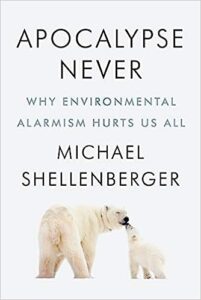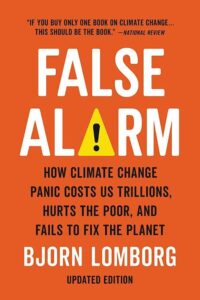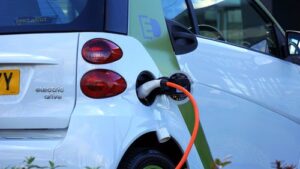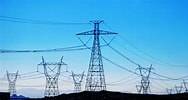LATEST DEVELOPMENTS
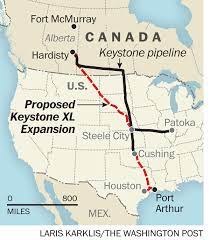 President Biden revoked, via one of his first Executive Orders, the Federal permits authorizing the completion of the Keystone Pipeline. A month after President Trump took office in January 2017, he signed a Executive Order authorizing its completion. Why are our Presidents playing flip-flop? To help you understand this issue, here’s the background of the pipeline:
President Biden revoked, via one of his first Executive Orders, the Federal permits authorizing the completion of the Keystone Pipeline. A month after President Trump took office in January 2017, he signed a Executive Order authorizing its completion. Why are our Presidents playing flip-flop? To help you understand this issue, here’s the background of the pipeline:
BACKGROUND
In November of 2015 President Obama vetoed the TransCanada Corporation’s proposed $7 billion Keystone XL Tar Sands Pipeline (also known as the Keystone Gulf Coast Expansion Project), it meant that 830,000 barrels of oil a day would not travel from Alberta, Canada to the Gulf’s oil refineries via a pipeline. Though a politically popular decision with environmentalists, it was very unpopular with construction unions, as well as most Americans.
To counter criticism, some from leaders in his own political party, President Obama made an appearance in Cushing Oklahoma on March 22, 2013 saying that he would fast-track any required permitting of the 485 miles of pipeline traveling from Cushing down to the Gulf. That part of the proposed pipeline is on privately-owned land in the U.S. so President Obama couldn’t do much to stop its construction even if he wanted to. Without the northern leg of the pipeline, however, the 830,000 barrels of much-needed oil/day wouldn’t be coming from Canada and this leg of the pipeline the President could and did stop because the pipeline would have to cross the Canadian-American border (and therefore required Federal approval).
TransCanada subsequently modified its proposed route through the environmentally-sensitive areas of Nebraska and resubmitted its application. There was not much remaining that was controversial and the U.S. State Department found it to have “no significant impacts on the quality of the human environment,” which is the wording and standard contained in the National Environmental Policy Act of 1969 (NEPA).
The Keystone pipeline is not simply about oil, but also about eleven thousand construction jobs and up to 100,000 indirect jobs, as well as significant positive effects on the economy, including U.S. energy independence. It was therefore important to analyze President Obama’s decision to determine if it was mostly political or based on genuine detriments to the environment.
It’s no secret that the far left is anti-fossil fuel because of what it perceives as unacceptable pollution. To this end, the Obama Administration came out with 5 sets of anti-coal regulations which were estimated to cost the United States the loss of over one million jobs. In addition, the Environmental Protection Agency (EPA) zeroed in on anti-fracking regulations to control the utilization of the huge natural gas reserves (over a 100-years worth) in the U.S.; however, the far-left contended that its opposition to the Keystone Pipeline was mainly because of possible leaks from the line. In addition, former Energy Secretary Chu had stated that it would be desirable to have U.S. gas prices at European levels ($8-10/gallon), so that alternative fuels would be more price-competitive.
Carbon emissions in the United States have been drastically reduced over the past 50 years. Autos emit only a tiny fraction of what they used to. Coal-fired power plants have been cleaned up. In contrast, China brings on-line two new coal-fired power plants a week and these plants, unlike U.S. plants, emit lots of pollution. Air pollution knows no boundaries, so it’s a lot less polluting to the earth for the U.S. to burn its coal (and oil) rather than for China.
Solar and wind sources of energy only supply about 5% of the nation’s energy needs. Hydroelectric supplies less than 10%, nuclear about 19% (France gets 80% of its energy from nuclear). So for the foreseeable future the U.S. still needs fossil fuels. Therefore this dilemma is not really a dilemma at all. If the U.S. cannot get the oil it needs from domestic sources and help improve the economy and create thousands of jobs at the same time, it will get it from foreign sources and give up to $500 billion a year of its wealth to countries that don’t like us and in some instances mean us harm, and to the detriment of the economy as well.
The United States is constantly improving extraction and utilization methods for fossil fuels, while continuing to develop alternative sources of energy, including nuclear energy. The potential for Keystone Pipeline leakage can be mitigated through built-in protective redundancies. Even the original Final Environmental Impact Statement (EIS), prepared pursuant to NEPA, published in late August 2011 after three years of preparation, found “no significant impacts” from the pipeline. If a pipeline oil leak did occur, it’s far easier to stop it and then clean it up, than if a leak occurred from an offshore pipeline.
There’s simply not enough alternative energy, including nuclear energy, currently available and it will be decades before there is, so for now we need fossil fuels and the United States has more natural gas, coal, and oil than any other country in the world, but it also has an array of laws and regulations preventing its access and use. The pipeline could be raised off the ground, as is the Alaska pipeline, or it could detour around the major 200,000-square-mile Ogallala or High Plains Aquifer in Nebraska and other surrounding States.
CONCLUSION
If the United States does not complete the Keystone pipeline, Canada will likely build an oil pipeline from the Tar Sands to its west coast and the 830,00 barrels of oil a day will be sold to China and an additional 150,000 barrels of oil a day from the Bakken Formation in North Dakota will have to continue to use trucks and rail to haul its oil south to Gulf refineries rather than simply using a safer Keystone Pipeline to transport it. Contributing to upward price pressure of oil will be the “slow-walking” or even forbidding of permitting of wells in the Gulf, not allowing drilling in ANWAR and on most of the Outer Continental Shelf…and OPEC (Organization of Petroleum Exporting Countries), will once again play the major role in setting world oil prices by manipulating supply.
President Obama delayed his decision on the pipeline until after the 2014 mid-term elections, basically because a large Democrat donor (Tom Steyer) pledged to donate over $50,000,000 to the Democrats if he did so (Steyer actually spent close to $80,000,000). After the 2010 mid-term elections, the new Republican-led House of Representatives voted to build the pipeline but the still-Democratic-led Senate voted against it. The 2014 Congress began in January 2015, and both the Republican-led House and now Republican-led Senate approved it, but President Obama vetoed it. President Trump signed an Executive Order on January 24, 2017 ordering the re-opening of the approval process for the pipeline. On March 23, 2017, the State Department granted a permit for the construction of the pipeline to proceed. President Biden in January 2021 signed an Executive Order revoking the Federal permits authorizing the completion of the pipeline, which had not yet been completed.
Consequently, thousands of Union construction workers lost their jobs as well as 100,000 plus other “indirect” workers that provided services to those construction workers.

